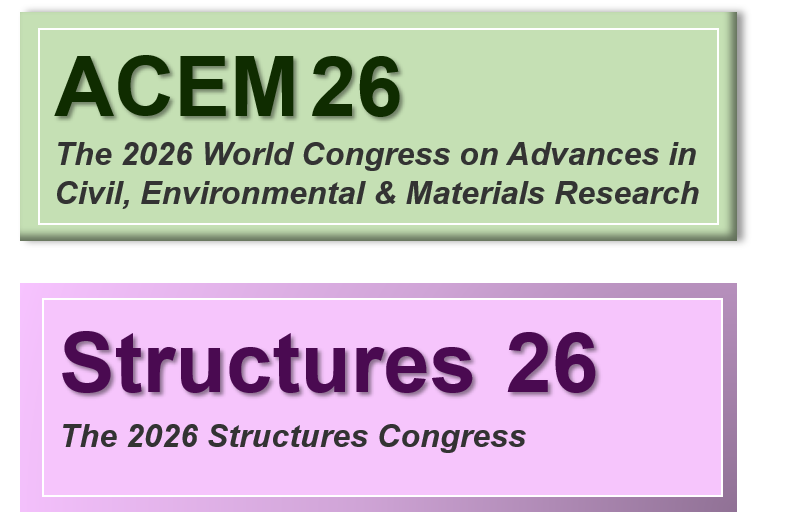You logged in as...
Abstract
This work reports on the kinematic analyses of a non-redundant spatial robot built with a translational manipulator assembled in series connection with a parallel wrist. The first mechanism is a fully-decoupled, fully-isotropic and singularity-free translational manipulator while the second mechanism is a spherical parallel manipulator equipped with rotational actuators. The parallel wrist is free of revolute joints with concurrent axes. Numerical examples are provided in order to show the application of the method.
Key Words
decoupled motions; screw theory; series-parallel manipulator; kinematics
Address
J. Gallardo-Alvarado, R. Rodriguez-Castro, A. Sanchez-Rodriguez: Department of Mechanical Engineering, Instituto Tecnologico de Celaya, Mexico
Abstract
In this paper, three precision poses geometric synthesis problem of 3R serial manipulators is solved using a polynomial continuation method. Denavit-Hartenberg parameters and a new formulation
using dual quaternions are used to formulate the problem and obtain the design equations. Upon choosing six of the design parameters arbitrarily, a system of thirteen polynomials in thirteen unknowns is derived.
Four new types for selecting the free choices are introduced and their design equations are solved using polynomial homotopy continuation method. Numerical example is included in which the multi-
homogeneous bounds for the solutions paths for the first type is 1152 and for the others are 9216.
Key Words
geometric synthesis problem; 3R serial manipulators; homotopy continuation; dual quaternions
Address
Omid Heidaria, Hamid M. Daniali: Department of Mechanical Engineering, Babol University of Technology, P.O. Box 484, Babol, Iran
Abstract
This work presents methods for haptic modelling of soft and hard tissue with varying stiffness. The model provides visualization of deformation and calculates force feedback during simulated epidural needle insertion. A spring-mass-damper (SMD) network is configured from magnetic resonance image (MRI) slices of patient\'s lumbar region to represent varying stiffness throughout tissue structure. Reaction force is calculated from the SMD network and a haptic device is configured to produce a needle insertion simulation. The user can feel the changing forces as the needle is inserted through tissue layers and ligaments. Methods for calculating the force feedback at various depths of needle insertion are presented. Voxelization is used to fill ligament surface meshes with spring mass damper assemblies for simulated needle insertion into soft and hard tissues. Modelled vertebrae cannot be pierced by the needle. Graphs were produced during simulated needle insertions to compare the applied force to haptic reaction force. Preliminary saline pressure measurements during Tuohy epidural needle insertion are also used as a basis for forces generated in the simulation.
Key Words
soft tissue; tissue model; haptic feedback; human tissue model; medical simulation
Address
Neil Vaughan, Venketesh N. Dubey: Bournemouth University, Faculty of Science and Technology, Poole, BH12 5BB, United Kingdom
Michael Y.K. Wee, Richard Isaacs: Poole Hospital NHS Foundation Trust, Longfleet Road, Poole, BH15 2JB, United Kingdom
Abstract
This paper describes the design and development of a bio-inspired swimming robot, intended for inspections purposes. The main goal of this work was the development and implementation of a first prototype of a robot with locomotion similar to a biological fish. For that purpose, it was first performed a study concerning fish swimming, in order to understand how they move. In parallel, a study was conducted on swimming robots already developed to examine their locomotion modes. With this background knowledge it was designed a prototype, that was latter implemented. After the prototype development there were performed several locomotion tests. Several experiments revealed that the robot was able to swim with stability and keeping the programmed direction.
Key Words
robotics; swimming; biological inspiration; biomimetics
Address
Jose Augusto M. Silva, Manuel F. Silva, Ramiro S. Barbosa: Department of Electrical Engineering, Institute of Engineering of Porto, Rua Dr. Antonio Bernardino de Almeida, 431, 4200-072 Porto, Portugal
Manuel F. Silva: INESC TEC–ROBIS, Portugal
Ramiro S. Barbosa: GECAD–Knowledge Engineering and Decision Support Research Center, Portugal


